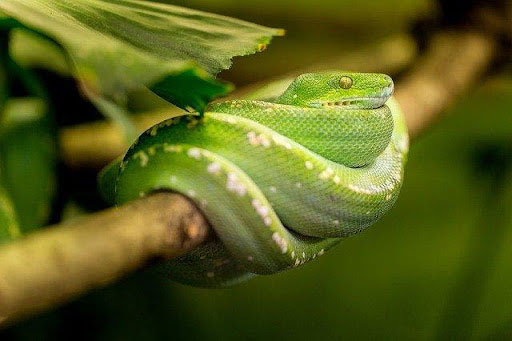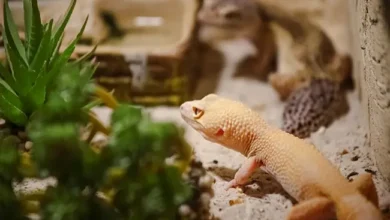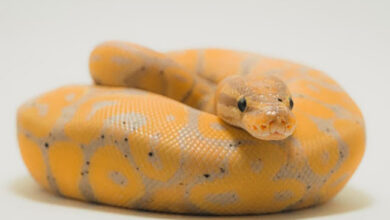
Snakes are fascinating creatures. Snakes have been around on the planet for about 100 million years, which is a long time! Snakes can be found in many different habitats and climates all over the world. Snakes vary in size from one inch to over 50 feet. But before you bring one to your home, you should know 7 important things!
Read More:
- All About Emotional Support Animals
- The Most Sacred Animals Around the Planet
- Dogs and Hamsters – Can Dogs Live With Hamsters?
- 4 Tips For Removing Pet Hair from Your Couch with a Vacuum
- Dog Eye Problems | Eight Most Common Eye Problems of Dogs In 2017
Snakes Are Not Slimy
Snakes do not crawl on their bellies like humans or other animals. Snakes move by moving the muscles in the side of their body that causes them to undulate and create waves along with their bodies which then push them forward through a series of curves similar to an inchworm’s locomotion on land.
Snakes can also use these same muscles to constrict prey as well as protect themselves from predators. It is important for new snake owners, who have never owned a snake before imagining My Snake Pet as a cuddly being, should consider getting two snakes instead of one because they will need companionship throughout the day while you’re away at work or school since they are nocturnal and sleep in the day and hunt for food and explore their surroundings at night.
Snakes are very sensitive to vibrations, so it’s important that snake owners do not disturb or tease them while they’re sleeping during the daytime hours because snakes will feel threatened when someone tries to touch, poke, grab, pick up, throw things near them, especially if you have young children living with you who might not understand how to handle a snake properly before bringing one home into your household.
They Can’t Burrow Into The Ground
They can’t burrow into the ground, so you will need to provide an enclosure for them. Snakes are most active during the nighttime, and they love sleeping in dark places like holes or under logs. So make sure their living space is not overcrowded with items that could potentially hide a possible predator (like your cat) because it may disturb the snake’s sleep cycle, causing stress which leads to illness.
Snakes’ general temperament greatly varies depending on species, but most snakes tend to be quite docile by nature when handled correctly. Snakes also have different personalities among themselves – some might come off as meanwhile others might even enjoy being held! But of course, there are always exceptions.
Snakes Don’t Have Ears, But They Do Have A Sense Of Smell And Sight Comparable To That Of Humans
Snakes also can pick up on vibrations in the air around them through their tongues which allows them to “taste” what is going on around them.
Snakes are cold-blooded reptiles, so they rely on the sun as an energy source as opposed to having their own body heat like mammals or birds – this means you should provide some sort of artificial heating for your snake if necessary depending on where you live. Snakes living in colder climates will need more time under direct sunlight, while those who reside in warmer environments might be better off without any additional heating at all.
Snake Bites Occur When Snakes Feel Threatened Or Cornered And Will Only Bite If Provoked
Snakes are not aggressive by nature and will only bite if they feel threatened or cornered. Snakes use their mouths for smelling, breathing, eating prey (and humans) as well as defense which leads to bites – so it is important that you always be aware of your surroundings when dealing with a snake!
Snakes do have fangs located on the upper jawbone behind their eyes containing venom glands connected to them. Snakes cannot control the amount of poison released through these fangs at any given time due to its location within their mouth, so even a “dry” snakebite can still lead to serious complications.
Most Snakes Have No Eyelids
Snakes do not have eyelids, so they must rely on licking the inner surface of their eyeball with a rough “tongue” to keep it clean from dust and debris. Additionally, snakes will shed (or molt) every once in a while – this means that you should be extra careful around your snake during these times because it is more sensitive than usual since all the scales are growing back at once!
Snakes Also Use Heat-Sensing Pits To Detect Prey Or Predators Nearby
Snakes use their tongues and hearing to pick up on vibrations in the air but also have special heat-sensing pits along the upper and lower jaw that enable them to “see” prey or predators nearby. Snakes can tell whether an object is alive by its warmth, so if you’re trying to play with your snake, for example, it might get scared off because it sees a human as something dangerous!
Predators are often the reason why some snakes have evolved to be nocturnal while others are active during daylight. Snakes that live near predators will try their best not to get eaten by being more active at night when it is safer – whereas those without any major threats nearby can stay out in the open longer!
Python Eggs Take About 3 Months To Hatch While Boa Constrictors Lay Eggs Once Every Three Years On Average
Snakes are oviparous animals which means they lay eggs rather than giving birth to live young. Snakes will often come together in huge numbers to mate, and during this time, the males fight with each other over who gets to fertilize a female’s eggs – but females must be careful not to get too close because if she steps on her own clutch of eggs, it may break them prematurely!
Snakes are fascinating creatures, but there are still plenty of misconceptions about them. As you can see from the list above, snakes have some pretty interesting features that make them unique among other reptiles in their family. Although there are many other aspects of snakes such as diet, behavior patterns, and proper care among others, these seven facts should be enough information for anyone who wants to learn more about this fascinating creature before bringing one home!


